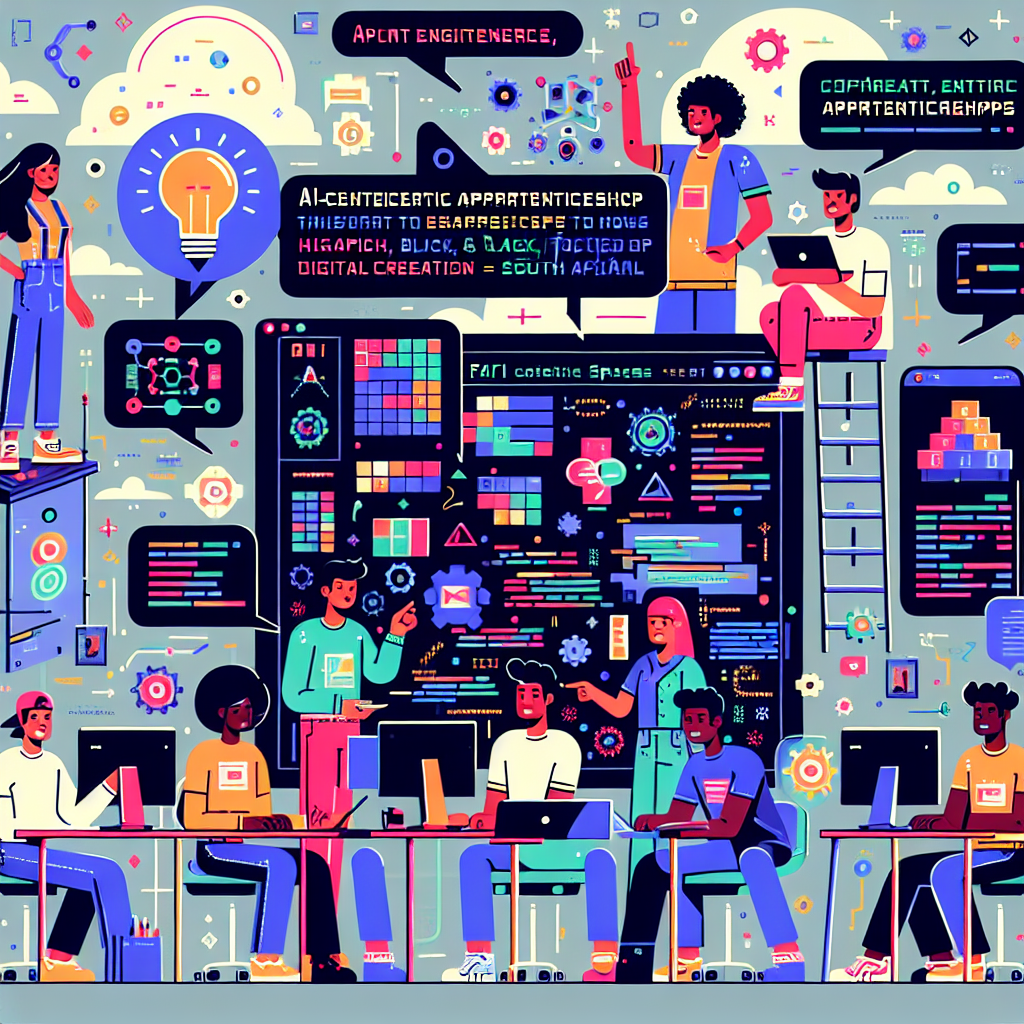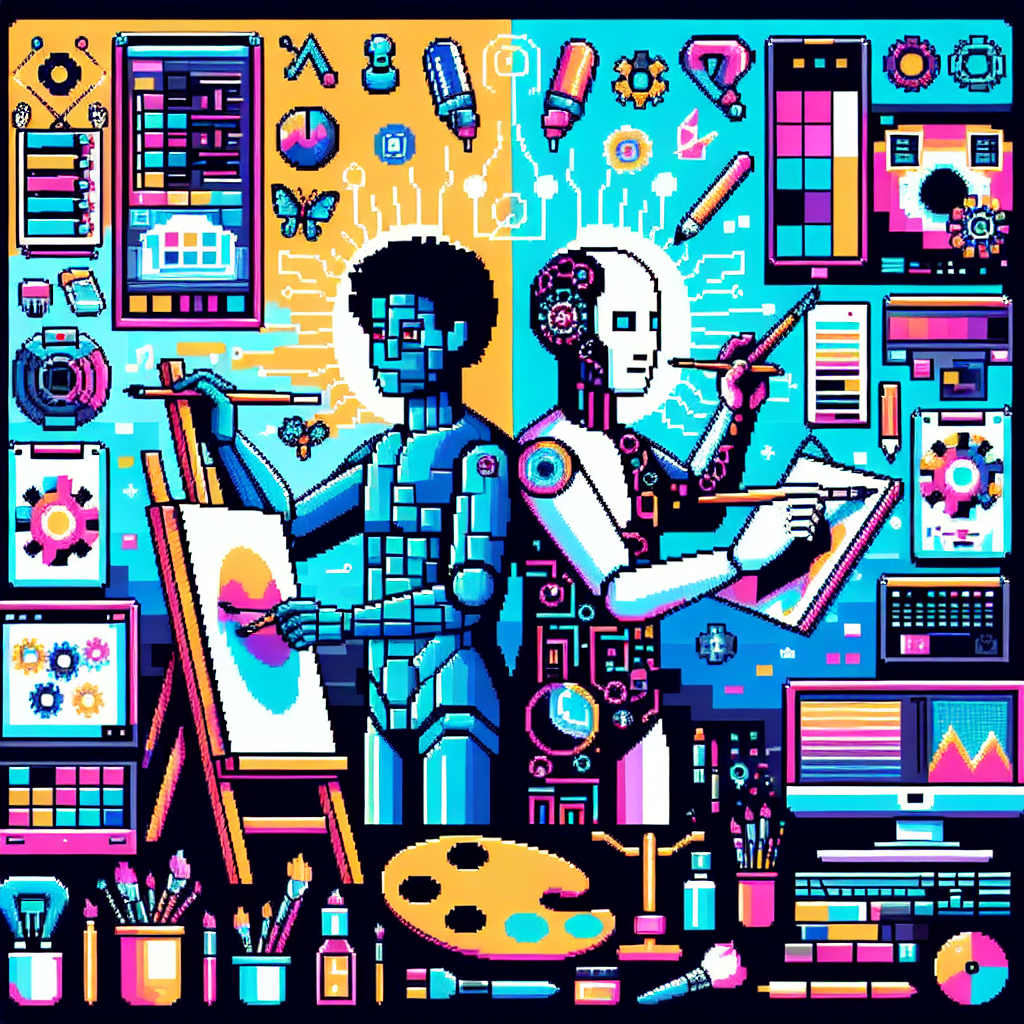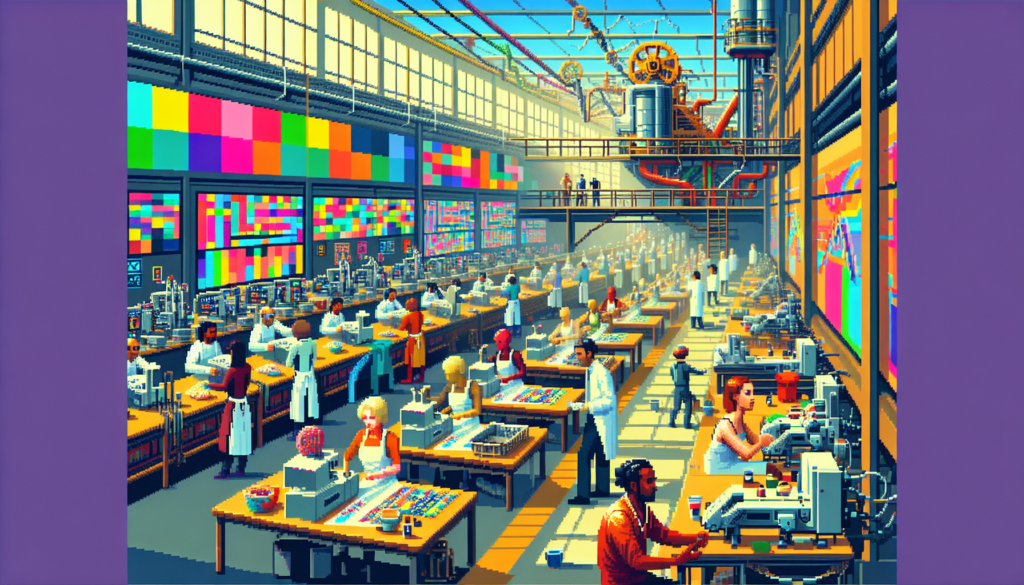Generative art is blowing up, and everyone’s arguing about what it means for authorship in the digital age. AI art programs are making it seriously blurry – who’s the real creator here? Is it even art? Yeah, those questions about ownership, copyright, and the very definition of art are kinda unavoidable now.
But let’s think back to the 1960s – Andy Warhol’s Factory was already shaking things up. Warhol was essentially crowd-creating art, using other people’s labor under his direction. Warhol’s silkscreens and his whole assembly-line thing had the art world raising eyebrows. Was Warhol the true artist, or were the Factory workers the real deal?
It’s like déjà vu, except with AI. These generative art programs are spitting out crazy good art with barely any human effort. So, who gets the credit? The prompt writer? The AI itself? It’s a real head-scratcher.
Just like in Warhol’s time, we find ourselves contemplating the same questions, except now with a modern twist – who’s the real author when AI is doing the heavy lifting?
Digital art is also pushing copyright law to its limits. If an AI creates something, who owns it? The prompt writer? The company behind the AI? What about the AI itself? Wild, right?
These aren’t just hypothetical questions for some philosophy class. This stuff has real consequences for artists, dealers, and collectors. The art market’s evolving faster than ever, and we need some ground rules for who owns what in the digital age.
Warhol’s Legacy: Mass Production, Ownership, and the Blurred Lines of Authorship
Warhol’s Factory was where it all went down – a wild mix of art and commerce fueled by silkscreens, soup cans, and celebrity faces. But Warhol’s work wasn’t as straightforward as it seemed. His mass-produced, appropriation art had everyone questioning: what even makes an artist?
The Factory was a full-on collaborative scene. Warhol’s crew of assistants churned out art like a well-oiled machine. This whole assembly-line approach made people wonder, was it Warhol’s vision, or were the workers the real artists?
And then there’s the whole appropriation art thing. Warhol took existing images – like those Campbell’s Soup cans – and slapped them on a canvas. He called it art. And you know what? It worked. He made bank by elevating the ordinary to high art. But did he actually create anything new?
Fast forward to AI-generated art, and things get even weirder. If Warhol’s mass-produced, appropriated images challenged the art world’s norms, what happens when an AI is creating art with minimal human input? Is the AI the artist, or is it just a tool, like a bunch of digital Warhol assistants?
Back in Warhol’s day, the art market was simple. Artists made art, galleries sold it, and collectors bought it. AI is turning that whole system on its head. Who owns the rights to art made by an AI? The prompt writer? The AI company? Maybe the AI itself?
This is a big deal. If AI can pump out art that looks just like the real deal, what’s the point of human-made art? Is it the creative process? The emotions it evokes? Or just the fact that it’s a tangible object? And what’s our role in all this? Are we just the AI’s assistants, feeding it prompts and telling it what to do?
The contemporary art world is buzzing with these questions. Some think AI-generated art is just factory-made junk, not real art. Others think it’s a chance to redefine what being an artist means – a new era of collaboration between humans and machines.
Prompt Engineering: The Modern-Day Equivalent of Warhol’s Factory Apprentices?
 Prompt engineering – it’s the name of the game in AI art. It’s not just pushing a button; you’ve got to speak the AI’s language.
Prompt engineering – it’s the name of the game in AI art. It’s not just pushing a button; you’ve got to speak the AI’s language.
Crafting the perfect prompt is an art itself. You need a deep understanding of what the AI can and can’t do, not to mention a feel for the overall artistic goal. It’s a delicate dance, my friends.
A good prompt engineer is like a master distiller, taking a complex concept and boiling it down to a few potent words. They get language, they get tone, and they understand how humans and machines communicate (or don’t, which is just as important). They’re the bridge between human creativity and artificial intelligence, and that’s pretty damn cool.
So, in the case of Warhol and his Factory “workers”, Andy isn’t much different from prompt engineers, guiding the labor through his vision of the end result.
But just like in Warhol’s Factory, prompt engineering raises questions about authorship. Who’s the real artist here? The prompt writer? The AI? Or is it a team effort?
In a lot of ways, A.I. is the new-age Warhol apprentices. They’re the behind-the-scenes doers, bringing artistic visions to life, steered by the vision of another (in this case, the prompt engineer’s). And that brings us back to that same thorny question – who owns creativity in the age of AI art?
The Ethics of AI Art: Who Owns the Creative Vision, and Who Gets the Credit?
AI art isn’t just changing the art itself; it’s forcing us to rethink the whole ethics game. We’re talking about creativity, authorship, ownership – the very foundations of art are getting a serious shake-up.
The big question, the one that everyone’s arguing about, is who gets to call themselves the artist? Is it the prompt writer, the one with the initial spark? The AI, cranking out the goods? Or do we need a new word for this whole collaborative mess?
Some people say the prompt writer is the true visionary, the one guiding the AI’s every move. Others say the AI deserves the credit – it’s the one producing something new and original, right? A few even make the claim that the artist responsible for the art the A.I. was trained on is the real responsible party, but that opens up an existential can of worms for another blog post.
But honestly, our trusty prompt engineers are the ones whispering sweet nothings into the AI’s ear. They’re shaping the creative output, so shouldn’t they get a piece of the pie? A co-author credit, maybe?
The more you think about it, the more you realize our old ideas about authorship and ownership just don’t cut it in the age of AI art. We need new rules, a whole new framework that embraces the beautiful chaos of humans and machines creating together.
Maybe it’s about recognizing the contributions of everyone involved – a kind of joint authorship where both human and machine get credit. Or maybe it’s about recognizing the “creative director” – the mastermind behind the vision – and finding ways to give them their due props.
Ultimately, AI is making us rethink what it means to be creative, to be an author, to own a piece of art. It’s messy, it’s complicated, and it’s exciting as hell. The art world is about to get a whole lot more interesting.
Navigating the Uncharted Territory of AI-Generated Art: A Call for Clarity on Authorship and Ownership
AI art is the Wild West right now – exciting, sure, but also a little chaotic. We’re venturing into uncharted territory, and frankly, we need a map. Those fuzzy lines around authorship and ownership? Yeah, that’s a problem.
It’s time for some new rules. We need a system that embraces the quirks of AI art, which means bringing everyone to the table: artists, programmers, lawyers – hell, maybe even a philosopher or two.
First things first: clear guidelines for who gets to call themselves the artist and who owns the rights to the art. Think of it like a classification system for AI art: how much human involvement was there? What kind of AI was used? What’s the final product look like? These are the questions we need answers to.
And how about some new ways to give credit where credit’s due? Joint authorship? AI-generated art credits? We need to acknowledge that humans and machines are both playing a part in this.
Then there’s the whole ownership thing. Are we talking co-ownership? Shared ownership? This whole AI art thing is a collaborative effort, so maybe our approach to ownership needs to reflect that.
And here’s a big one: what role does the AI itself play? Is it a co-author, or is it just a fancy tool, like a paintbrush with a microchip?
These are big questions, and we need to start talking about them – like, now. The art world is evolving, and our ideas about creativity, authorship, and ownership need to evolve with it. Let’s embrace the change and see where this crazy AI art ride takes us.
Reimagining the Role of the Artist: A New Era of Collaboration between Humans and Machines
 The art world is evolving, and the role of the artist is evolving with it. AI is changing everything we thought we knew about creativity.
The art world is evolving, and the role of the artist is evolving with it. AI is changing everything we thought we knew about creativity.
The lone wolf artist, toiling away in their studio? That’s becoming a thing of the past. The future is all about collaboration – artists and AI working together as one.
Forget paintbrushes and chisels, the artist of tomorrow needs to speak the language of algorithms and data sets. They’ll be part creative genius, part tech wiz, fluent in both traditional art techniques and the latest AI tools. They’ll be designing AI systems, fine-tuning their output, and grappling with all the ethical curveballs AI throws their way.
Think of it this way: the artist becomes more like a curator, a conductor leading an orchestra of human and artificial intelligence. It’s not just about making art anymore; it’s about shaping the creative process itself.
The future of art is a two-way street, a collaboration between human imagination and artificial intelligence. It’s exciting, it’s messy, and it’s full of possibilities. It’s a whole new world of art, just waiting to be explored.

